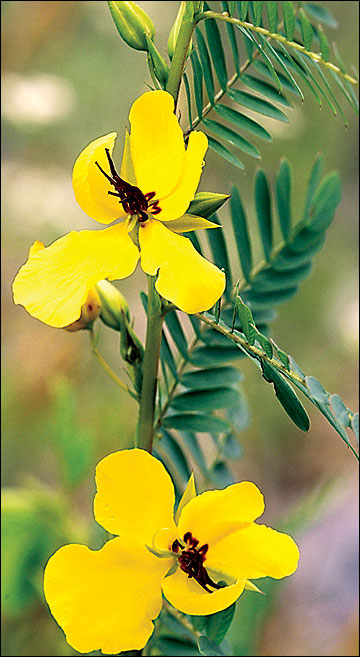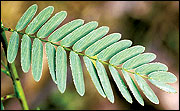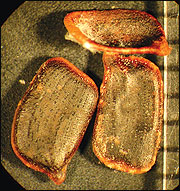Partridge pea
- Cassia fasciculata, Chamaecrista fasciculata
Forb
Flowers are about 1 inch across, with reddish-purple bases.
©Don Kurz
Description
This annual legume is a staple in seed mixes for small game. It thrives in sandy soils and responds well to soil disturbance and burning. Partridge pea grows up to 3 feet tall (more commonly 12 to 18 inches) and has compound, alternate leaves. Leaflets are relatively small, less than 1 inch long. Flowers are bright yellow with reddish-purple bases, about 1 inch across. Ripened seedpods are red-brown and often shatter explosively when touched or squeezed, throwing seeds a considerable distance.
Bloom period
June to October
Use by bobwhites
Partridge pea seeds show up in numerous food habit studies in the south, but rarely in the Midwest. This may be because southeastern growth forms are shorter and bushier than Midwest plants or because the seed may be more apt to fall on exposed ground in southern woods than on grassy prairie soils. Nevertheless, it is a good plant to include for diversity in planting mixtures and is relatively cheap. Like Illinois bundleflower, its presence is a good indicator of brood habitat because it readily appears after burns, disking or grazing. When partridge pea begins to decrease in fields where it was prevalent, it is probably time to consider some kind of disturbance to reinvigorate the stand.






